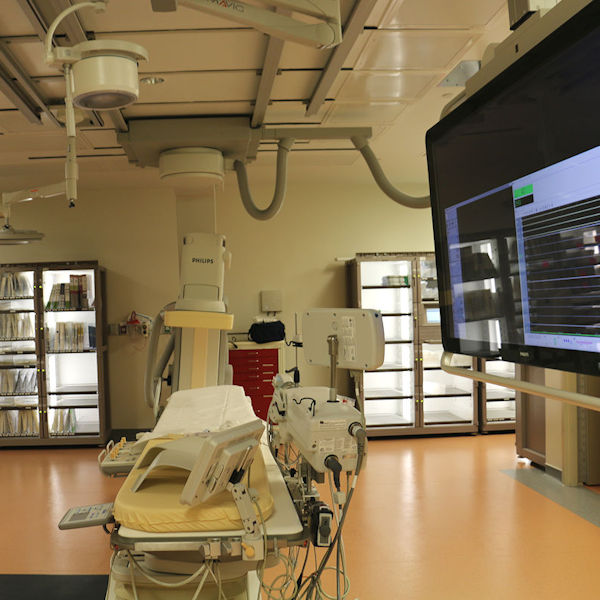Angioplasties/stenting can improve blood flow to your heart by reopening arteries that are clogged with plaque. This procedure is performed on more than a million patients in the U.S. each year. It can reduce chest pain and other symptoms of heart disease, provide emergency treatment during a heart attack or lessen the damage of a heart attack.
The procedure is nonsurgical and minimally invasive. Tanner Heart Care physicians perform about 500 angioplasty procedures each year.
Angioplasty/stenting can be performed in emergent cases, when it’s determined the patient is experiencing a heart attack. According to the American College of Cardiology (ACC), a patient experiencing a heart attack should be able to undergo an angioplasty procedure within at least 90 minutes of arriving at the hospital. At Tanner, the average time is less than the ACC guidelines and much less than the national average.
We also frequently perform angioplasty on a non-emergent basis, when it is planned based on the patient’s needs.
Before the Procedure
In nonemergency cases, you might first get a chest X-ray, blood tests, an electrocardiogram (EKG), a cardiac PET/CT or a stress test prior to an angioplasty. These will help us find the blockage and make sure angioplasty is the right procedure for you.
Once your procedure is scheduled, your doctor will tell you:
- When to stop eating, drinking and taking medicine
- Details about your hospital visit
During the Procedure
 Angioplasty/stenting is done in a part of the hospital called the cardiac catheterization lab. At Tanner, they are performed in a cath lab in the Tanner Heart and Vascular Center at Tanner Medical Center/Carrollton or Tanner Medical Center/Villa Rica (shown at right).
Angioplasty/stenting is done in a part of the hospital called the cardiac catheterization lab. At Tanner, they are performed in a cath lab in the Tanner Heart and Vascular Center at Tanner Medical Center/Carrollton or Tanner Medical Center/Villa Rica (shown at right).
You will receive local anesthesia, so you won’t feel pain, but you’ll be awake during the procedure.
An interventional cardiologist will make an incision in your arm, in the wrist, or leg near the groin and insert a small tube called a catheter. We thread the catheter through your arteries all the way up to your heart. A second tube with a small, deflated balloon on the end is inserted through the catheter until it reaches the blockage in your artery.
When the balloon is inflated, it pushes air against the plaque, compressing it and opening your arteries. Then the balloon is deflated and removed. Your doctor also may place a stent — a small piece of wire mesh, often coated with medicine — in your artery to keep it open.
The Days Ahead
Depending on where the incision was made for the catheter — the wrist or the leg — you’ll most likely be able to walk with help a few hours after the procedure. You will be kept overnight in the hospital for observation.
Your doctor will let you know what medicines to take, as well as when you need a follow-up visit and what type of diet and exercise plan to follow. Cardiac rehabilitation will be prescribed to help you regain strength in your heart after the procedure. At Tanner, our cardiac rehab program combines exercise, monitored by nurses trained in cardiac care, with education to help you make lifestyle changes to ensure continued heart health.
For more information about cardiology services at Tanner, visit Tanner Heart Care.
Tanner Heart & Vascular Specialists has locations in Bremen, Carrollton, Villa Rica and Wedowee. For more information, visit HeartAndVascularSpecialists.org or call 770-812-9326.